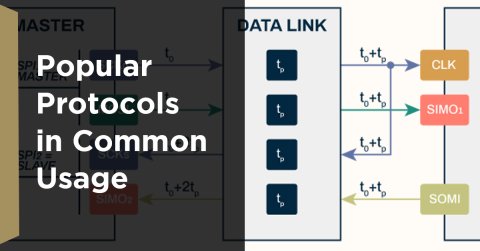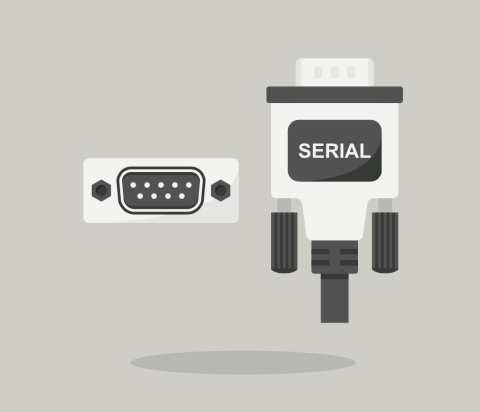ISM Bands Around the World

ISM bands (industrial, scientific, and medical) are parts of the RF (radio-frequency) spectrum reserved for general use by, as the name suggests, scientific, medical, and industrial devices. Their creation was in response to specific demands by these industries for access to the RF spectrum to perform functions without having to compete with the traditionally intensive users of RF, the communications, and defense sectors.
The critical thing to note with ISM bands, which can be deduced from the name, is that they were conceived to exclude any device that uses RF for audio communications explicitly. This application has its own frequency bands set aside and typically requires a frequency license to operate. This ensures that the devices operating in the ISM bands can’t interfere with communications equipment through frequency segregation, rather than relying on testing and certification to ensure such interference cannot occur. This simplifies the approval process for devices that operate in the ISM bands and hence why ISM bands are sometimes referred to as unlicensed bands. It must be made clear that unlicensed means the device does not need an individual license from a telecommunication regulatory authority. This is not the same as unregulated; the device will still need to meet strict regulations and be certified by an appropriate regulatory authority.
The creation of ISM bands came about due to the radio-frequency spectrum being ever-increasing, filled with a whole range of communications, radio, television, radar, and other applications, including microwave ovens that crowded out other potential users. Another issue was the different RF bands were used for different applications worldwide, so the frequencies available for a particular application varied depending on which country the device was intended to operate in. There has been an enormous growth in such devices; everything from radio-controlled toys, remote garage door openers, baby monitors, cordless phones, WiFi, and Bluetooth all make use of ISM bands. This is a trend for increasing the utilization of RF by domestic appliances that shows no sign of diminishing.
Those of you old enough to be around when mobile phones were introduced may well remember that a handset brought in the US wouldn’t work in Europe due to the different frequencies used. It wasn’t until phones that could operate across multiple bands were developed that anyone traveling from the US to the rest of the world could use their own phone. ISM bands were adopted internationally to eliminate device (though not mobile telephone) roaming issues and created two significant opportunities. First, products developed in any country that uses RF can be sold in any other country that recognizes the ISM bands, assuming it gains electromagnetic compliance certification for the other country. Secondly, users with such a device can continue to use it as they travel through these countries.
The ISM bands are incredibly popular as radio-frequency devices can use them without the need for the user to license their use. The device’s creator just needs to obtain electromagnetic compliance certification as they would operate in any other band. If the device uses a pre-certified RF module or only receives data, there is no additional certification or licensing cost to implement wireless communications. This represents a significant saving in the time, effort, and financial cost of putting a product through the testing and approvals process. This makes adoption by end users much simpler, as each end user/company does not have to obtain a government issued license to use the device, they can simply power it up and start using it without added regulatory hurdles and expenses.
Definition of the ISM bands
The ISM bands are defined by the ITU (International Telecommunication Union) Radio Regulations, though an allowance is made for regional differences. This is catered for with the definition of two types of ISM band.
The first type is applicable worldwide and comes with the caveat that any communication services operating within these bands must tolerate harmful levels if interference is caused by other devices operating within them.
The second type is applicable on a regional basis. While designated for ISM radio-frequency applications, these applications may require special authorization by the relevant regulatory bodies for the communication services in the countries they operate in. This makes these bands unsuitable for targeting global applications.
| ISM Band Frequency Limits | ISM Band Type | ||
|---|---|---|---|
| 6.765 MHz | 6.795 MHz | Regional | |
| 13.553 MHz | 13.567 MHz | Worldwide | |
| 26.957 MHz | 27.283 MHz | Worldwide | |
| 40.66 MHz | 40.7 MHz | Worldwide | |
| 433.05 MHz | 434.79 MHz | Regional | |
| 902 MHz | 928 MHz | Regional | |
| 2.4 GHz | 2.5 GHz | Worldwide | |
| 5.725 GHz | 5.875 GHz | Worldwide | |
| 24 GHz | 24.25 GHz | Worldwide | |
| 61 GHz | 61.5 GHz | Regional | |
| 122 GHz | 123 GHz | Regional | |
| 244 GHz | 246 GHz | Regional | |
In addition to these, there are regional Short Range Device bands that you may find Sub-1GHz radio modules capable of operating within, such as 138.20-138.45 MHz and 863-870Mhz among others. While some of these have crossover with ISM bands, and are effectively the same for end users, they are not ISM bands.
US Rules and Regulations
In the US, the FCC (Federal Communications Commission) defines the ISM bands’ rules. All use of ISM bands is governed by the FCC Part 18 regulations, while Part 15 covers unlicensed communication devices that share ISM radio-frequencies. The rules broadly state that unlicensed ISM users must not cause interference to licensed users, and they must be tolerant of interference generated by licensed users. The critical elements of FCC Part 18 for anyone looking to develop a device that uses the ISM bands is that the product must be authorized under either a Declaration of Conformity or certification procedure before use or marketing. An application for certification is required to be filed with the FCC with the necessary technical details for the device. FCC Part 15 covers EMC compliance and sets out the criteria under which a device can be operated without an individual license. When a vendor or manufacturer wants to market an unlicensed wireless transmitter in the US, it must be tested in an FCC authorized laboratory before applying for certification. Once test results are available to demonstrate compliance with the FCC part 15 regulations, the FCC will certify the transmitter and issue a product identification number. The FCC identification number needs to be displayed on the product before it can be released for use.
The FCC relaxed the no communications restrictions to allow ISM bands for mobile communications and wireless LANs. However, the emphasis is placed on these applications being resistant to interference from other devices using the same bands rather than enforcing regulatory controls on any device using the ISM band. It is worth noting that a distinction is sometimes made in the regulatory standards between an ISM device and a device that operates using ISM frequencies. Low power transmitters such as those found in NFC (near field communications) devices, WiFi, baby monitors, and Bluetooth devices are not considered ISM devices. However, equipment where RF energy is generated for the primary purpose of performing work energy, such as in industrial heaters or microwave oven, will be classed as an ISM device.
For example, 2.4 GHz is within a designated ISM frequency band and is commonly used for wireless networking. Wireless networking comes under the definition of ITE (Information Technology Equipment) rather than ISM equipment, which comes under the FCC rules for unlicensed intentional radiators.
Rest of the World Rules and Regulations
In Canada, the regulations are the same as the FCC regulations, and the certification certificate is issued by Innovation, Science and Economic Development Canada, a department of the Government of Canada.
In the United Kingdom, the use of ISM devices is allowed, provided they do not contravene the provisions of the Wireless Telegraphy Act. These regulations limit the field strength and terminal voltage and include specific regulations for controlling Electro-Medical and RF Heating Apparatus interference. The essential requirements are that the manufacturer for a device must take all practicable and necessary steps to ensure that radiation from ISM is minimal and that, outside the band designated for use by this equipment, it is at a level that does not cause harmful interference to communications services and, in particular, to safety-related service such as radio navigation. This is of particular importance for microwave ovens and medical diathermy machines that produce powerful emissions that can create significant electromagnetic interference levels.
In Europe, the European Telecommunications Standards Institute (ETSI) is responsible for regulating the devices which operate in ISM bands. The procedures necessary for certification of ISM equipment for the EU market are outlined in a Directive. The process is based on the principle of self-declaration, the manufacturer provides a declaration that the product satisfies all legal requirements.
Each country or region has its own specific rules and regulations that need to be certified against. However, a significant level of commonality makes certification for multiple countries and regions straightforward by testing for the worst-case criteria to ensure compliance for all criteria. Many test laboratories offer worldwide type approval services to achieve this.
Getting certified
The critical element of certification wherever you are in the world is the testing of the device. Before sending a device to the test laboratory, all hardware and software must be at the correct and final production standard. Changes cannot be made after qualification as this would invalidate the results and necessitate re-testing. Similarly, the device must be supplied with the final production standard enclosure or housing, affecting results. And don’t forget that the test laboratory must be on the FCC-approved list for US certification.
Using ISM Bands
If you choose to use RF signals that fall within an ISM band, it’s crucial to understand whether the device falls under ISM rules. ISM is defined as “equipment or appliances designed to generate and use locally radio frequency energy for industrial, scientific, medical, domestic, or similar purposes, excluding applications in the field of telecommunications.”
While ISM bands have opened up parts of the radio-frequency spectrum for unlicensed use, this hasn’t given device designers carte blanche to do whatever they like when emitting RF energy. Wherever you are in the world, rules and regulations still apply to govern how much RF energy you can intentionally transmit and how much RF energy you can unintentionally release as electromagnetic interference. The process for certifying that you meet the rules varies from country to country, but the overall intent is the same. Don’t adversely affect any other devices outside the ISM bands, minimize as best you can any side effects within the ISM bands, and protect yourself against all the other devices operating within the ISM bands.
Would you like to learn more about how Altium Designer® can help you with your next PCB design? Talk to an expert at Altium.










